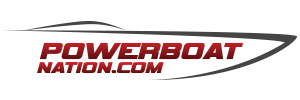PowerBoatNation.Com staff photographers Don Heldoorn and Frank Robinson traveled to Lake Ming Ca. this past weekend to get a firsthand look at how a top fuel hydro race team puts together an 8000 hp bullet drag boat through the paces of competitive racing.
PowerBoatNation meet up with Sean Broidy who is the master fabricator and fixture builder for the Top Fuel Hydro #460 Toxic Rocket Race Team, www.toxicrocket.com owned by Joe Cassidy of Granite Construction located in San Francisco. Top Fuel Drag Boat Racing is really for the love of the sport, while sponsorship is always welcome racing takes place regardless and the money comes from somewhere. Sean showed us through the pits and talked to us on what it takes to be top fuel race team in the Lucas Oil Drag Boat Racing Series.
Beside the deep pockets needed to create a race team, it takes a crew of professionals that each have a role in the success of the team. From engine head builder Alan Johnson to clutch setup to engine tuner they all have their part and responsibility, after each pass the team has to remove the engine strip it down, check for ware, bearing seals, go over the whole boat and put it all back together in just 60 minutes.
This day at Lake Ming was just a trial run and shakedown of the boat setup. The team wanted to make sure the propellers were aligned and were in the proper location for the balance of horse power to weight of the boat.
The first pass came at around 11 am and all at once the fans lined the shore to witness and feel the explosive power these incredible Powerboating Beasts produce, and its fast, if you are napping and blink you may miss it. With pilot Glen Wilson at the controls “smoke on the water” becomes a reality not just an ad slogan. The launch was vicious and when the boat came down for the set it was heading left towards the shore and Glen had to shut her down. Back at the Pits when I showed Glen the video of his pass he said “Why did it turn left?” A question I passed off to Sean, and he explained to me that the power from the boats propellers pushed one of the shafts forward 1/8″ which in turn pushed the boat to the left. Sean’s quote to me was, “the props have to be 90 degrees square to the centerline of the boat and if not she won’t run straight”. I asked” isn’t that what the rudder if for?”, “Not exactly”, he explained, “The boat has to want to run straight or all the steering of the rudder in the world won’t straighter her out. You have less than 4 seconds in 1000 feet to keep this 22 foot 3000 pound rocket “PowerBoat” straight so you can keep the pedal mashed to the floor to keep those 4.5 g’s of force pinning you to the seat.” A few hours in the pits and with some minor corrections to the starboard prop shaft and a freshen up of the motor; they were ready to make what was to be their final pass for the day. I witnessed the fuel team empty six, 5 gallon jugs of fuel into the aluminum custom fabricated fuel cell. To keep the boat balanced while the fuel is consumed the fuel cell is aligned along the centerline of the boat. This puts it right behind Glens back. Safety of course is first and foremost and each driver in these boats is protected from a crash and fire in a very well designed safety capsule. In the event of a crash the canopy detaches from the boat and skips to a stop and floats while the rescue boat comes to assist. An air tank is fitted into the boat and a regulator is custom built into the helmet so fresh air is supplied to the pilot in such an event. The second pass proved to be a correct move as that boat launched straight. The elapsed time (e.t.) for the pass was 174 mph. and Glen had to shut down the Toxic Rocket at about the 150 foot line for an engine issue, but they are definitely on the right track for the upcoming season.
PBN will continue to provide updated information on the race team’s progress this season. The first national event can be witnessed at Lake Irvine, Calif. May 3rd – 5th. See here for schedules. For more information about Toxic Rocket racing you can visit their website.
Staff Photographer/ writer : Don Heldoorn





